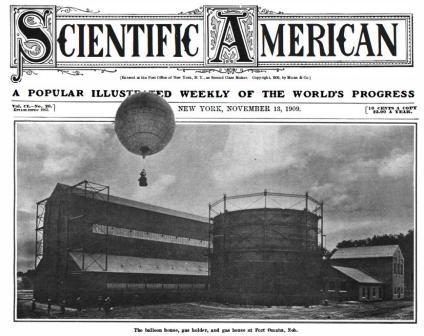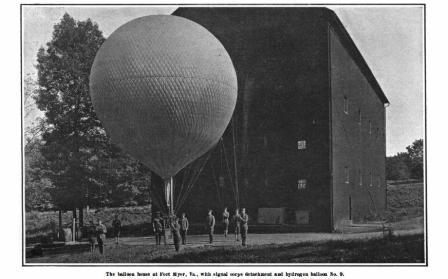This article was published in Scientific American’s former blog network and reflects the views of the author, not necessarily those of Scientific American
Before there were B-52s and F-15s, there were balloons. The issue from November 13, 1909, reported on the status of aeronautics in the U.S. military, which at the time was under the control of the Signal Corps, a branch in charge of the transfer of information and intelligence.
According to the article, the United States Army had two balloon houses, one at Fort Meyer and the other at Fort Omaha. They also owned "a number of spherical balloons, one dirigible, and will have at least one and possibly two aeroplanes before another year, being under contract to accept one from A.M. Herring and the Wright brothers..."

On supporting science journalism
If you're enjoying this article, consider supporting our award-winning journalism by subscribing. By purchasing a subscription you are helping to ensure the future of impactful stories about the discoveries and ideas shaping our world today.

The article aims to prove that, despite thoughts that "the United States has done nothing in aeronautics," and "we are popularly conceded to be simply a minus quantity," there was much to look forward to considering the greatness of the two existing balloon houses. Considering World War I was just a few years away, it looks like they started just in time.

About the Author: Mary Karmelek is a production assistant for Nature Publishing Group and is currently working on Scientific American's Digital Archive Project, where she spends countless hours scouring articles and ads of decades long ago. She graduated with her MA in English from Fordham University in 2010 and currently resides in New York City. Whereas her educational background is in gender and war trauma in modernist literature, Mary also has a keen interest in the historical and visual documentation of science, nature and medicine.